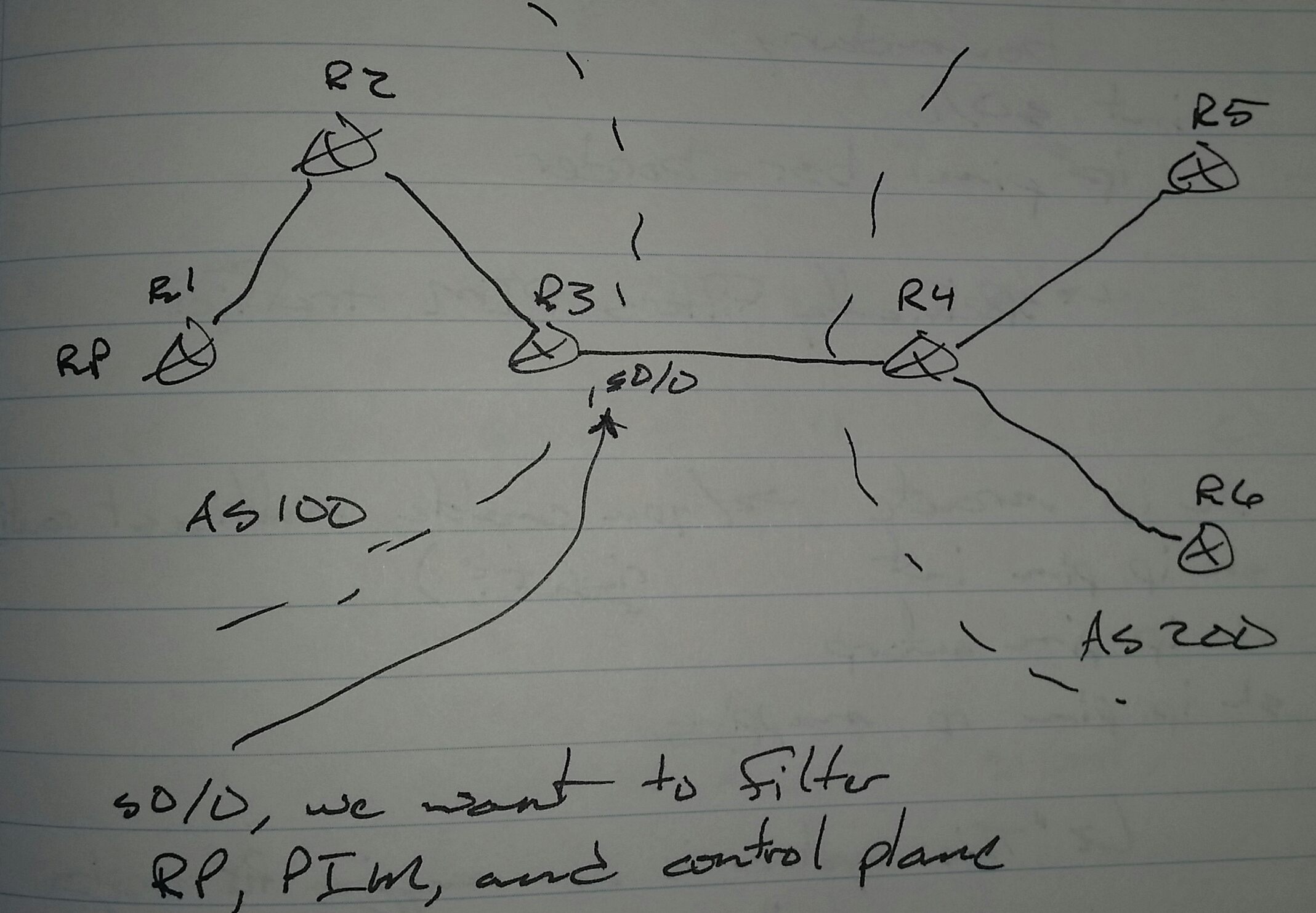Multicast Bootstrap Router (BSR) Notes
Multicast Bootstrap Router (BSR)
– Open standard
– PIM version 2 messages
– RP information is distributed by BSR
– If there are multiple RPs, then priorities are checked
-> Lower is better
– If there are multiple BSRs, then higher priority is better
-> Then higher IP address
Hask-mask
– Sent by BSR
-> A value between 0 – 32
-> Default is 0
Group Address and RP
– Value1 = f (Hash and group, RP1)
– Value2 = f (Hash and group, RP2)
Configuring RP
ip pim rp-candidate <int> [group-list <acl>] [interval <sec>] [priority <value>]
Configuring BSR
ip pim bsr-candidate <int> [interval <sec>] [<hask-mask-length>] [priority <value>]
R2(config)# ip pim rp-candidate lo0
R3(config)# ip pim bsr-candidate lo0
RP-Announce Filter
– Controls which routers can become RPs
Configuring MA
ip pim rp-announce-filter rp-list <acl> [group-list <acl>]
– rp-list <acl>
-> Permit – filter the RP
-> Deny – allow the RP
-> Reverse logic
Multicast Data Plane Filtering
int fa0/0
ip multicast rate-limit { in | out } [limit <kbps>] [source-list <acl>] group-list <acl>]

Auto-RP Filtering
– On boundary ports to other organizations, RP announce | discovery messages should be filtered and PIM should not be exchanged
-> But you still may want to allow multicast traffic
R3(config)# int s0/0
ip multicast boundary <acl> [filter-autorp] [in | out]
– <acl>
-> Group for which traffic will be controlled
By default, incoming control plane and outgoing data plane traffic is controlled
Instructor comment, “BSR is better method because is doesn’t need dense mode.”
BSR Filtering on Boundary
– Specifically filters PIM traffic
int s0/0
ip pim bsr-boundary
sh ip mroute
-> You enabled multicast routing, right?
sh ip pim int
sh ip pim autorp
sh ip pim rp mapping
-> “This system is an RP-mapping agent.”

